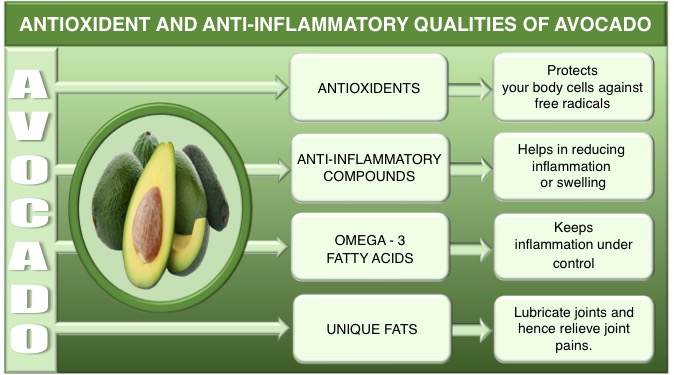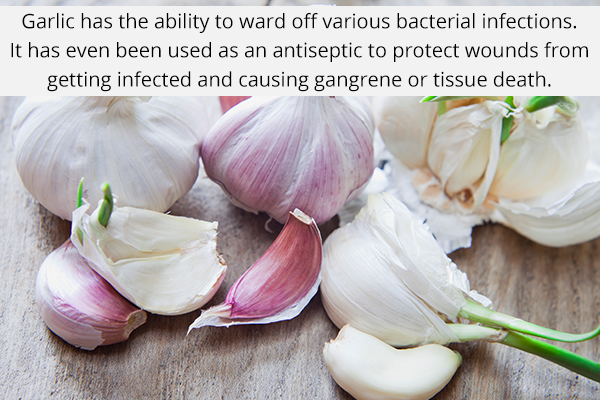The Silent Fire Within: Why Avocados Are a Non-Negotiable in Your Anti-Inflammatory Arsenal
The world around us buzzes with an energy that is both invigorating and exhausting. We navigate demanding careers, intricate social lives, and the endless stream of information that defines modern existence. Yet, beneath the surface of this vibrant chaos, a silent fire often smolders within many of us – chronic inflammation. It’s not the acute, protective inflammation that rushes to heal a sprained ankle or fight off a nasty cold. No, this is a stealthier, more insidious force, silently chipping away at our vitality, contributing to a litany of modern ailments from nagging fatigue and persistent joint pain to more severe conditions like heart disease, diabetes, and even certain cancers.
For too long, we’ve been conditioned to treat symptoms, popping pills to quell pain or manage cholesterol. But a growing understanding of human physiology, coupled with ancient wisdom, is shifting our focus from mere symptom management to root cause resolution. And at the heart of this paradigm shift lies the profound power of food. Food, it turns out, is not just fuel; it is information, a potent messenger that can either fan the flames of inflammation or extinguish them, nurturing our bodies back to a state of equilibrium and vibrant health. This is the story of the anti-inflammatory diet, a journey back to fundamental nutrition, where whole, unprocessed foods become our allies in the fight for well-being. And within this powerful dietary narrative, one humble fruit emerges as an undeniable hero: the avocado.
Understanding the Enemy: Inflammation, Friend or Foe?
To truly appreciate the avocado’s role, we must first understand its adversary. Inflammation is a fundamental biological process, an essential part of the immune system’s response to injury or infection. Think of it as your body’s internal emergency response team. When you cut your finger, that redness, swelling, and warmth are all signs of acute inflammation working diligently to send immune cells to the site, clear out debris, and initiate healing. This is a good, necessary, and temporary response.
The problem arises when this acute response fails to resolve and transitions into a state of chronic, low-grade inflammation. Imagine that emergency response team never leaving, constantly on high alert, even when there’s no immediate threat. Over time, this sustained internal alarm can begin to damage healthy tissues, contributing to oxidative stress and paving the way for chronic disease. It’s like a slow, constant drip that eventually wears down the strongest stone.
What fuels this chronic fire? The modern lifestyle is a primary culprit. Our dietary landscape, often dominated by highly processed foods, refined sugars, unhealthy trans and saturated fats, and a scarcity of nutrient-dense produce, is a major inflammatory trigger. Beyond diet, chronic stress, insufficient sleep, exposure to environmental toxins, and a sedentary lifestyle all conspire to keep our inflammatory pathways perpetually activated. The gut microbiome, our internal ecosystem of trillions of bacteria, also plays a critical role; an imbalanced gut can send inflammatory signals throughout the body. Recognizing these triggers is the first step towards taking control and actively choosing a path of anti-inflammatory living.
The Anti-Inflammatory Diet: A Blueprint for Healing
The anti-inflammatory diet isn’t a restrictive fad; it’s a holistic approach to eating that prioritizes foods rich in antioxidants, healthy fats, fiber, and phytonutrients, while consciously limiting those known to promote inflammation. It’s less about deprivation and more about abundance, focusing on what you can eat to nourish and heal.
Its core principles include:
- Whole, Unprocessed Foods: Shifting away from packaged goods towards foods in their natural state – fruits, vegetables, whole grains, lean proteins, nuts, and seeds.
- An Abundance of Fruits and Vegetables: These are powerhouses of antioxidants and phytonutrients that neutralize free radicals and modulate inflammatory responses. Think vibrant berries, dark leafy greens, cruciferous vegetables, and a rainbow of other produce.
- Healthy Fats: Emphasizing monounsaturated and polyunsaturated fats, particularly omega-3 fatty acids, which are potent anti-inflammatory agents.
- Lean Proteins: Sourcing protein from fish, poultry, legumes, and plant-based options, while moderating red and processed meats.
- Fiber-Rich Foods: Crucial for gut health, satiety, and blood sugar regulation, fiber helps foster a healthy microbiome that in turn reduces systemic inflammation.
- Limiting Inflammatory Triggers: Drastically reducing intake of refined sugars, trans fats, highly processed vegetable oils (like corn and soybean oil), refined grains, and for some sensitive individuals, excessive dairy or gluten.
Within this framework, certain foods emerge as superstars due to their concentrated anti-inflammatory compounds. Fatty fish like salmon and mackerel provide EPA and DHA omega-3s. Turmeric, with its active compound curcumin, is a renowned anti-inflammatory spice. Berries and dark chocolate are packed with polyphenols. And then there’s the avocado – a creamy, versatile fruit whose nutritional profile makes it an indispensable component of any anti-inflammatory eating plan.
The Star of Our Story: The Humble Avocado
For centuries, the avocado, or "ahuacatl" as it was known to the Aztecs, has been a cherished food source. Originating in south-central Mexico, its rich, buttery texture and mild flavor made it a staple in Mesoamerican diets long before it gained global culinary fame. Far from being a fleeting trend, the avocado’s enduring popularity is rooted in its extraordinary nutritional value and its remarkable ability to support health from multiple angles. It’s not just a delicious addition to guacamole; it’s a profound medicinal food.
Let’s peel back its rough, green skin and delve into the nutritional powerhouse that lies within:
1. The Power of Monounsaturated Fatty Acids (MUFAs): The Heart of the Matter
The most celebrated component of the avocado is its fat content, predominantly monounsaturated fatty acids (MUFAs), with oleic acid being the most prominent. Unlike the saturated and trans fats that can promote inflammation and cardiovascular disease, MUFAs are celebrated for their protective effects.
- Reducing Systemic Inflammation: Studies have shown that diets rich in MUFAs can help reduce markers of inflammation, such as C-reactive protein (CRP), a key indicator of inflammation in the body. Oleic acid works by directly modulating inflammatory pathways, dampening the production of pro-inflammatory cytokines like TNF-alpha and IL-6.
- Cardiovascular Guardians: These healthy fats are instrumental in improving cholesterol profiles, specifically by lowering levels of low-density lipoprotein (LDL or "bad" cholesterol) while potentially raising high-density lipoprotein (HDL or "good" cholesterol). This improves arterial health, reduces plaque formation, and decreases the risk of heart disease, a condition intimately linked to chronic inflammation.
- Insulin Sensitivity: MUFAs also play a crucial role in improving insulin sensitivity, helping cells respond more effectively to insulin and thus better regulate blood sugar levels. This is vital in preventing and managing type 2 diabetes, another condition characterized by chronic inflammation.
2. Fiber: The Gut’s Best Friend
A single medium avocado contains about 10 grams of dietary fiber, a significant contribution to the recommended daily intake. This fiber is a blend of both soluble and insoluble types, each offering unique benefits.
- Gut Health and Microbiome Support: Soluble fiber acts as a prebiotic, feeding the beneficial bacteria in your gut. A healthy and diverse gut microbiome is foundational to an anti-inflammatory state, as it produces short-chain fatty acids (SCFAs) like butyrate, which have potent anti-inflammatory effects throughout the body and strengthen the gut barrier. Insoluble fiber adds bulk to stool, promoting regularity and helping to remove toxins.
- Satiety and Weight Management: The combination of healthy fats and fiber makes avocados incredibly satiating, helping to reduce overall caloric intake and prevent overeating, which can be a factor in weight gain and increased inflammation.
- Blood Sugar Regulation: Fiber slows down the digestion and absorption of carbohydrates, preventing rapid spikes in blood sugar that can trigger inflammatory responses.
3. A Multivitamin and Mineral Powerhouse
Beyond fats and fiber, avocados are a treasure trove of essential vitamins and minerals that each contribute to their anti-inflammatory prowess:
- Vitamin K: Essential for blood clotting and bone health, Vitamin K also plays a role in modulating inflammation.
- Folate (Vitamin B9): Crucial for cell repair and DNA synthesis, adequate folate levels are linked to lower levels of homocysteine, an amino acid whose elevation is associated with increased inflammation and cardiovascular risk.
- Vitamin C: A powerful antioxidant that helps protect cells from damage caused by free radicals, Vitamin C also supports immune function.
- Vitamin E: Another potent fat-soluble antioxidant, Vitamin E helps protect cell membranes from oxidative damage and can reduce inflammatory markers.
- Potassium: Avocados boast more potassium than bananas, a mineral vital for maintaining healthy blood pressure, fluid balance, and proper nerve and muscle function. Balanced electrolytes are crucial for overall cellular health and can indirectly influence inflammatory processes.
- B Vitamins: A range of B vitamins support energy metabolism and nerve function, contributing to overall cellular resilience.
- Magnesium: Involved in over 300 enzymatic reactions in the body, magnesium is critical for muscle and nerve function, blood glucose control, and blood pressure regulation. Magnesium deficiency is often linked to increased systemic inflammation.
4. Phytochemicals and Antioxidants: The Unsung Heroes
Avocados are also rich in a variety of unique plant compounds that offer additional anti-inflammatory and protective benefits:
- Carotenoids: Especially lutein and zeaxanthin, which are powerful antioxidants known for their role in eye health, protecting against age-related macular degeneration and cataracts. These carotenoids also act as systemic antioxidants, neutralizing free radicals throughout the body.
- Phytosterols: Including beta-sitosterol, which has been shown to help lower cholesterol levels and possess anti-inflammatory properties.
- Phenolic Compounds: Various phenolic compounds found in avocados contribute to their antioxidant capacity and ability to modulate inflammatory pathways.
How Avocados Fight Inflammation: The Mechanisms Unveiled
The avocado’s anti-inflammatory power isn’t just a sum of its parts; it’s a synergistic symphony where each nutrient plays a vital role in intricate biological processes.
- Modulating Inflammatory Pathways: The healthy fats and antioxidants in avocados actively interfere with the molecular pathways that lead to inflammation. They can inhibit the activation of NF-kB, a master regulator of inflammation that controls the expression of many pro-inflammatory genes. By keeping NF-kB in check, avocados help prevent the body from initiating an excessive inflammatory response. They also help reduce the production of pro-inflammatory cytokines like TNF-alpha and IL-6, which are key communicators in the inflammatory cascade.
- Combating Oxidative Stress: Chronic inflammation often goes hand-in-hand with oxidative stress, a state where there’s an imbalance between free radicals (damaging molecules) and antioxidants (molecules that neutralize free radicals). The abundance of antioxidants in avocados – including Vitamins C and E, carotenoids, and various phenolic compounds – directly scavenges these free radicals, protecting cells from damage and breaking the vicious cycle between inflammation and oxidative stress.
- Supporting Cardiovascular Health: As mentioned, the MUFAs in avocados are instrumental in improving lipid profiles, reducing LDL cholesterol, and increasing HDL. Beyond this, avocados contribute to maintaining healthy blood pressure through their potassium content and can improve the elasticity of blood vessels, reducing arterial stiffness, a common marker of inflammation and predictor of heart disease.
- Nurturing Gut Health: The high fiber content of avocados acts as a prebiotic, fostering a thriving community of beneficial gut bacteria. A healthy gut microbiome is a cornerstone of a robust immune system and a reduced inflammatory state. These beneficial bacteria produce short-chain fatty acids (SCFAs) which not only nourish the cells lining the gut but also exert systemic anti-inflammatory effects. A healthy gut barrier also prevents "leaky gut," where toxins and undigested food particles can enter the bloodstream and trigger systemic inflammation.
- Stabilizing Blood Sugar: The combination of healthy fats and fiber in avocados significantly slows down glucose absorption, preventing the rapid spikes and crashes in blood sugar that can trigger inflammatory responses and contribute to insulin resistance. By promoting stable blood sugar, avocados help mitigate one of the primary drivers of chronic inflammation and metabolic dysfunction.
- Aiding in Weight Management: While calorie-dense, avocados are nutrient-dense and highly satiating. Their healthy fats and fiber promote a feeling of fullness, which can help reduce overall calorie intake from less nutritious, inflammatory foods. Maintaining a healthy weight is crucial, as excess adipose tissue (especially visceral fat around organs) is metabolically active and produces numerous inflammatory compounds.
Beyond the Health Claims: Integrating the Green Gold into Your Life
Understanding the science behind the avocado’s benefits is one thing; consistently integrating it into your daily life is another. Fortunately, the avocado is remarkably versatile, making it easy to incorporate into almost any meal.
Selecting and Storing Your Avocados:
Choosing a ripe avocado is key to enjoying its creamy texture and flavor. Look for one that yields slightly to gentle pressure but isn’t mushy. Avoid those with large soft spots or discolored skin. To ripen a hard avocado faster, place it in a paper bag with an apple or banana, which release ethylene gas. Once ripe, store avocados in the refrigerator to slow down further ripening. To prevent browning once cut, sprinkle with lemon or lime juice, wrap tightly, and store in the fridge.
Versatility in the Kitchen:
The possibilities are nearly endless:
- The Classic: Guacamole remains a beloved choice. Opt for a simple recipe with fresh lime juice, red onion, cilantro, and a pinch of sea salt to keep it clean and anti-inflammatory.
- Breakfast Boost: Sliced or mashed on whole-grain toast (or gluten-free crackers for those avoiding gluten) with a sprinkle of chili flakes and everything bagel seasoning. Blend into smoothies for a creamy texture and a dose of healthy fats that keeps you full longer.
- Salad Enhancer: Add diced or sliced avocado to any salad for a luxurious texture and to help absorb fat-soluble vitamins from other vegetables. It makes a fantastic base for creamy, dairy-free dressings.
- Sandwich and Wrap Upgrade: Replace mayonnaise with mashed avocado for a healthier, flavorful spread.
- Creative Culinary Uses:
- Creamy Sauces: Blend avocado with herbs, garlic, and a touch of lemon juice for a luscious, dairy-free pasta sauce or a topping for grilled fish or chicken.
- Soups: Swirl a dollop of mashed avocado into warm soups for added richness and nutrition.
- Desserts (Yes, Desserts!): Its creamy texture makes it a surprising ingredient in healthy desserts. Think chocolate avocado mousse (blended with cocoa powder, sweetener, and vanilla) or even avocado-based ice cream for a dairy-free treat.
- Baking: In some recipes, mashed avocado can replace butter or other fats, adding moisture and nutrients while reducing less healthy fats.
Meal Planning Examples:
- Breakfast: Green smoothie with spinach, banana, almond milk, and half an avocado.
- Lunch: Large salad with mixed greens, grilled chicken or chickpeas, colorful vegetables, and a generous portion of sliced avocado with a lemon-ttahini dressing.
- Snack: Sliced avocado with a sprinkle of sea salt and red pepper flakes, or a small bowl of guacamole with vegetable sticks.
- Dinner: Baked salmon with roasted sweet potatoes and a side of avocado and tomato salsa.
Addressing Common Concerns: Mindful Consumption
While avocados are nutritional powerhouses, a knowledgeable audience might have valid questions:
- Calorie Density: Yes, avocados are calorie-dense due to their fat content. However, they are also incredibly nutrient-dense and satiating. The key is mindful portion control within a balanced diet. A quarter to a half of an avocado per meal is often sufficient to reap the benefits without overdoing calories. Focus on the quality of calories over sheer quantity.
- Environmental Impact: Avocado cultivation, particularly in certain regions, has raised concerns about water usage and deforestation. As conscious consumers, it’s wise to be aware of these issues. Supporting sustainably sourced avocados, exploring local options where available, and consuming them as part of a diverse, plant-rich diet can help mitigate these concerns.
- Allergies: While rare, some individuals can be allergic to avocados, often linked to latex allergies. It’s always important to listen to your body and consult a healthcare professional if you experience adverse reactions.
The Journey Continues: A Lifestyle, Not Just a Diet
The anti-inflammatory diet, with avocados as a shining star, is more than just a temporary eating plan; it’s a profound shift towards a lifestyle that prioritizes nourishment, balance, and well-being. It’s about listening to your body, understanding the language of food, and making conscious choices that support your health long-term. Avocados, with their unique blend of healthy fats, fiber, vitamins, minerals, and antioxidants, offer a delicious and effective tool in this journey. They are not a magic bullet, but rather a powerful component of a broader strategy that also includes stress management, adequate sleep, regular physical activity, and a positive mindset.
Conclusion: Embracing the Green Gold
The silent fire of chronic inflammation may be a pervasive challenge of our modern age, but the antidote lies within our reach, often in the most unassuming forms. The avocado, once a humble fruit from ancient lands, now stands as a testament to nature’s profound capacity to heal and protect. By embracing this creamy, nutrient-dense "green gold" and integrating it thoughtfully into an anti-inflammatory dietary framework, we move beyond mere symptom management. We embark on a journey of proactive health, nourishing our bodies at a cellular level, extinguishing the silent fire, and reclaiming the vitality that is our birthright. So, let us celebrate the avocado, not just for its exquisite taste, but for its unparalleled power to foster health, resilience, and a life lived free from the pervasive shadow of inflammation. Make it a must-have, and feel the difference.







